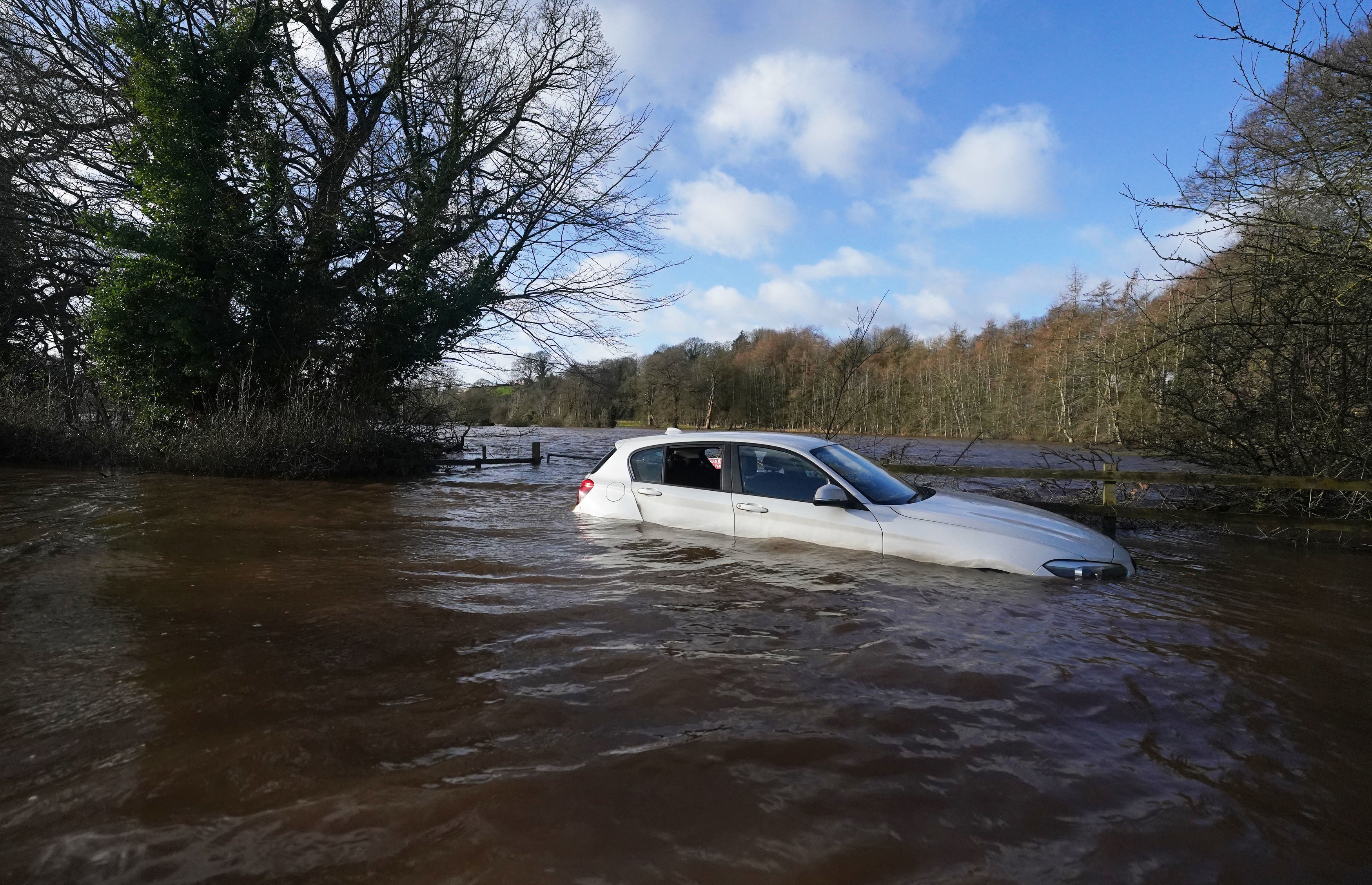Drought conditions could persist into winter across the UK, despite forecasts for a wetter-than-average autumn and increasing flood risks, officials warn.
The Met Office and Environment Agency say the current outlook for September, October, and November shows a higher likelihood for wetter and windier conditions compared to the 30-year average.
However, they caution that the anticipated rainfall may not be sufficient to fully reverse the severe impact of this year’s record-breaking dry and hot summer, which saw several regions declare drought status and implement hosepipe bans.
It also means that areas of the UK could feasibly experience both drought and flooding at the same time, as the storm season kicks off and flood risks increase.
The warning comes as the government’s Flood Resilience Taskforce is set to meet virtually on Monday to discuss preparations for possible flooding in the coming months and recent progress made on defences.
The taskforce, which was set up last September to boost the country’s response to increasingly extreme weather, has been working on measures such as warning systems, real-time data, and bolstering flood defences.
The Met Office said its autumn outlook will help the taskforce prepare for the forthcoming winter period and ensure communities are better protected from the impact of flooding.
Chief meteorologist Will Lang said the overall signal for wetter weather is the UK average and rainfall will likely “vary significantly across the regions”, with flood risks depending on various factors.
“There is an increased likelihood of westerly weather patterns, which typically bring more rainfall to western and northern parts of the UK, while eastern and southern areas may experience drier conditions than the national average suggests,” he said.
But Mr Lang also said the current outlook for rain over autumn is unlikely to be enough to reverse the effects of drought, especially in England.
“We’re going to need more rain than that.”
There is also a good likelihood the UK will see a warmer-than-average autumn, as Mr Lang explained: “We tend to get that for most seasonal forecasts these days and that’s really a reflection mainly of our warming climate, and how much things have changed just in the last 30 years.”
Caroline Douglass, executive director for flood and coastal risk management at the Environment Agency, said the first flushes of heavy rain on dry, hard soil can cause flooding but can also wash pollutants into waterways, resulting in fish kills.
“What we want is nice, steady, flowing rain that wets things up really nicely, not flood events, not a sudden rainfall everywhere,” she said.
“But we know it never works out like we’d like … Certainly (it) isn’t an end to a drought yet.”
Asked if areas could see drought status continue into winter, she said: “It’s entirely a possibility.
“If we don’t get the rainfall in the locations that are already in drought or prolonged dry weather, then you could have drought status continuing in those particular locations.
“It really is going to be dependent on where the rain lands.”

The Environment Agency said more communities up and down the country will see increased flood protection as the taskforce continues to roll out measures to safeguard properties.
Ms Douglass said the agency has also invested in better protection for around 27,500 properties in 145 schemes between March 2024 and March 2025, and is on track to meet the target of 52,000 by March 2026.
The work is part of the government’s £2.65bn investment over two years to upgrade and build new flood defences across the country.
“As we head into autumn, we need to think about flood risk even though drought is still being felt in some parts of the country,” she said.
“Working with our partners in the Floods Resilience Taskforce, we will continue to ensure the nation’s flood resilience is bolstered by delivering new flood and coastal defences in towns and cities across the country.”
But she also said people should make preparations where they can, such as referring to resources like the National Flood Forum and local authorities, signing up to warnings, and not driving through floodwaters.
“We know we cannot prevent flooding in all scenarios,” she added.
“We know that it can still happen, and we need to make sure that people are prepared.”
Yellow thunderstorm alert warns of rain, lightning and hail for parts of UK
Total lunar eclipse ‘blood moon’ to be visible for much of England and Wales
Brits urged to ‘keep their cool’ during emergency alert drill
Drought uncovers lost structures of famous Peak District reservoir
Summer 2025 confirmed as UK’s warmest on record
Delete your old emails to save water during drought, Environment Agency tells Britons
Mapped: Is there a hosepipe ban in my area and what restrictions are in place?







